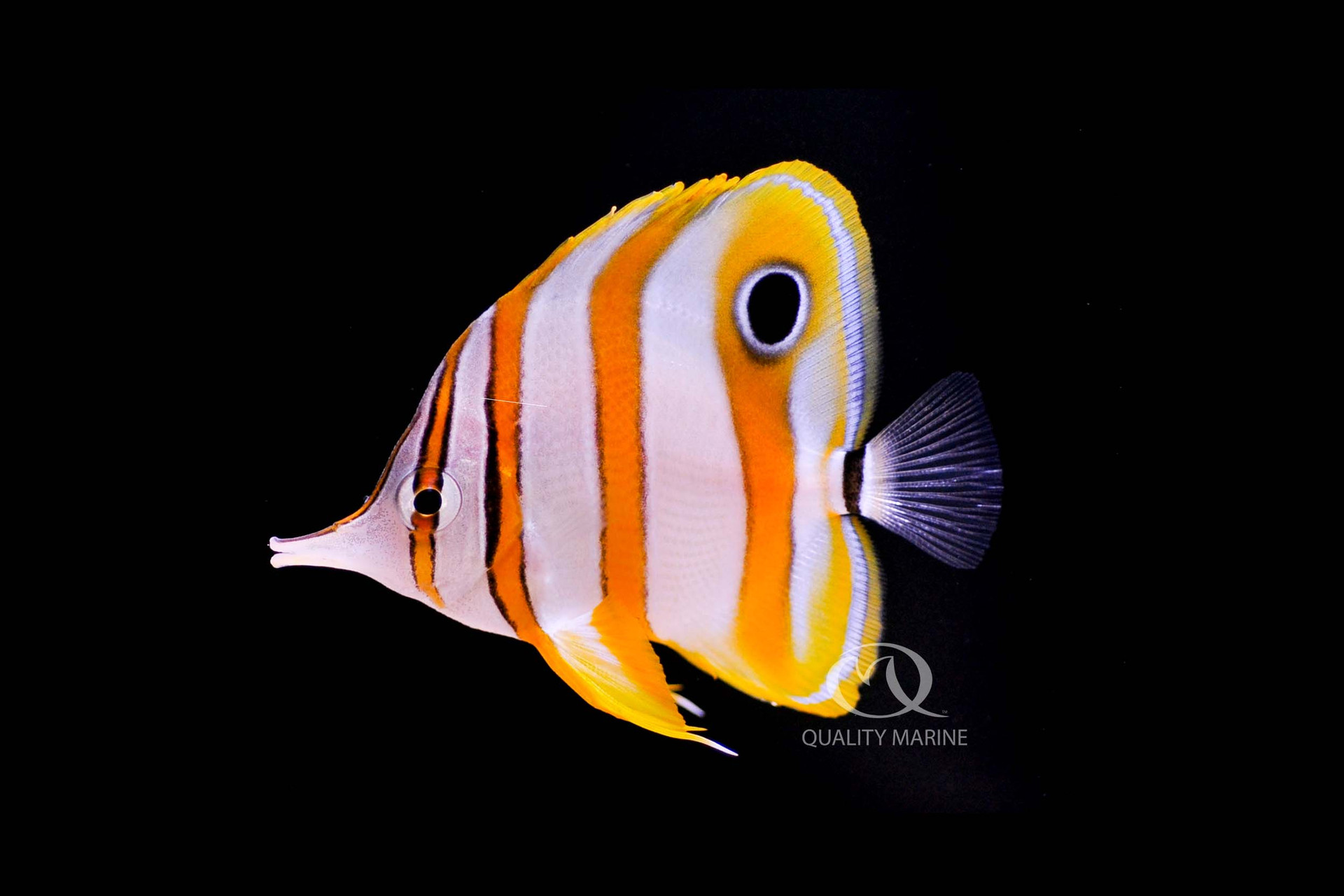A Copper Show Stopper

The Copperband Butterflyfish (Chelmon rostratus) is a member of the family Chaetodontidae known collectively as “Butterflyfish”. They are a beautiful fish, characterized by a long snout, tall pearlescent body with metallic copper bands and fins and a bold eye spot at the rear of the dorsal fin. Reaching eight inches over a possibly decade long life span in captivity, a healthy copperband could be a centerpiece to a marine aquarium for many years to come!
Widespread throughout the Western Pacific & Indian Oceans, they like rocky reef habitat and can be found inside the lagoon as well. Do to their reef association, they are usually found in shallower water, less than 100 feet. This makes them ideal for brightly lit marine aquariums.
A 75 gallon aquarium would be a bare minimum for a single copperband butterflyfish, with a 120 gallon aquarium (two foot width) providing a better footprint. There should be plenty of rock work as they feed by constantly exploring the reef around them for hidden invertebrates. Butterfly fish can be aggressive towards other similar fish (members of Chaetodontidae, butterflyfish) so housing a single butterfly in an aquarium is the best idea, unless it is a very large one.
Feeding is one of the most important parts of Copperband care. Before purchasing a specimen, ask to see it fed at your LFS. If the specimen isn’t eating, its best to stay away. Sustainable, ethical collecting methods are key to getting healthy, feeding specimens for your aquarium. Another difficulty in keeping Copperbands is their feeding style. They are constantly searching for, and eating small portions. Because of this you should feed small meals to your Copperband as frequently as possible. Live foods can be employed to entice a new fish to eat and having an established reef will provide a variety of worms and other live foods growing on the live rock. Most Copperbands are known to eat aptasia and can be used to control or rid a reef tank of them, though others leave these pest anemones completely alone. While they can, and sometimes will do a good job keeping your reef clean of pest worms and anemones, they can also eat some desirable reef inhabitants like tubeworms, clams, and other small invertebrates. Considering a Copperband “reef safe” is a risk, and if they run out of a preferred food source, they are likely to turn their attention towards other members of your reef.
Copperband butterflies have been successfully bred in captivity; spawned for the first time in 2016. Spawning occurred with adults being between 5-6” in length. Larval fish were fed live algae and copepods as they grew, and settled out at sixty days post hatch. There is very slight sexual dimorphism (males and females look different) males snouts have a slight hump and their nape has a steeper slope than female fish. In the end, fish were combined and observed to determine pairs. Fish that were found swimming together frequently without aggression were determined to be paired. There is a lot of detailed information on how these fish were spawned, and so attempting to replicate it as a hobbyist would be a great challenge for which a basic framework already exists.
Copperband butterfly fish are among the most beautiful of butterflyfish. Their colors can really only be appreciated in real life, rather than photo or video. A healthy Copperband is a focal point in any marine tank, and their ability to efficiently remove some marine pests can make them a real asset in some aquariums. They should only be purchased from reputable sources, so ask your LFS to get you a sustainable Copperband butterflyfish from Quality Marine today!